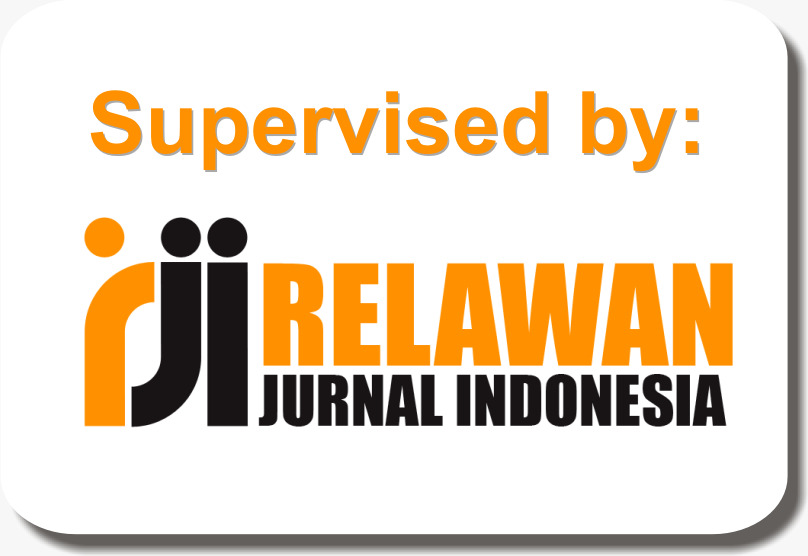DOLPHIN DETECTION USING AN ENHANCED LIGHTWEIGHT YOLO ARCHITECTURE
Abstract
Keywords
Full Text:
PDFReferences
M. Elmezain, L. S. Saoud, A. Sultan, M. Heshmat, L. Seneviratne, and I. Hussain, ‘Advancing underwater vision: a survey of deep learning models for underwater object recognition and tracking’, IEEE Access, 2025.
L. Liu et al., ‘Deep learning for generic object detection: A survey’, International journal of computer vision, vol. 128, no. 2, pp. 261–318, 2020.
F. Han, J. Yao, H. Zhu, and C. Wang, ‘Marine organism detection and classification from underwater vision based on the deep CNN method’, Mathematical Problems in Engineering, vol. 2020, no. 1, p. 3937580, 2020.
C. Kim, B.-Y. Kim, and D.-G. Paeng, ‘Monitoring of wild and rehabilitating dolphin interactions during rehabilitation period using sur-veillance technologies’, Scientific Reports, vol. 15, no. 1, p. 26161, 2025.
L. Cai, N. E. McGuire, R. Hanlon, T. A. Mooney, and Y. Girdhar, ‘Semi-supervised visual tracking of marine animals using autono-mous underwater vehicles’, International Journal of Computer Vision, vol. 131, no. 6, pp. 1406–1427, 2023.
H. Zhang, Q. Zhang, P. A. Nguyen, V. C. S. Lee, and A. Chan, ‘Chinese white dolphin detection in the wild’, in Proceedings of the 3rd ACM International Conference on Multimedia in Asia, 2021, pp. 1–5.
H. Leo, F. Arnia, and K. Munadi, ‘Fine tuning CNN pre-trained model based on thermal imaging for obesity early detection’, J Rekayasa Elektrika, vol. 18, pp. 53–60, 2022.
Z. Bao, ‘The UAV target detection algorithm based on improved YOLO V8’, in Proceedings of the International Conference on Image Processing, Machine Learning and Pattern Recognition, 2024, pp. 264–269.
Z. Zhang, F. Gui, X. Qu, and D. Feng, ‘Netting damage detection for marine aquaculture facilities based on improved mask r-cnn’, Journal of Marine Science and Engineering, vol. 10, no. 7, p. 996, 2022.
L. Ezzeddini et al., ‘Analysis of the performance of Faster R-CNN and YOLOv8 in detecting fishing vessels and fishes in real time’, PeerJ Computer Science, vol. 10, p. e2033, 2024.
T. O. Fossum, Ø. Sture, P. Norgren-Aamot, I. M. Hansen, B. C. Kvisvik, and A. C. Knag, ‘Underwater autonomous mapping and char-acterization of marine debris in urban water bodies’, arXiv preprint arXiv:2208. 00802, 2022.
V. Mane, S. Patwardhan, P. Pethkar, and R. Patil, ‘Underwater object tracking and classification of marine animals’, in 2024 Interna-tional Conference on Inventive Computation Technologies (ICICT), 2024, pp. 1054–1058.
A. Homoud, S. Das, and S. Townley, ‘Challenges in underwater object detection and video segmentation using deep learning’, in 2024 First International Conference for Women in Computing (InCoWoCo), 2024, pp. 1–6.
P. Vijayalakshmi, M. Seetharaman, and E. Praveen, ‘Underwater Image Enhancement and Object Recognition Using CNN Algorithm’, in 2024 5th IEEE Global Conference for Advancement in Technology (GCAT), 2024, pp. 1–5.
C. Prathima, C. Silpa, A. Charitha, G. Harshitha, C. S. Charan, and G. R. Sailendra, ‘Detecting and Recognizing Marine Animals Using Advanced Deep Learning Models’, in 2024 International Conference on Expert Clouds and Applications (ICOECA), 2024, pp. 950–955.
X. Xu, J. Hu, J. Yang, Y. Ran, and Z. Tan, ‘A fish detection and tracking method based on improved inter-frame difference and YOLO-CTS’, IEEE Transactions on Instrumentation and Measurement, 2024.
W. Ouyang and Y. Wei, ‘An anchor-free detector with channel-based prior and bottom-enhancement for underwater object detection’, IEEE Sensors Journal, vol. 23, no. 20, pp. 24800–24811, 2023.
M. D. Putro, Y. Mose, A. C. Andaria, J. Litouw, V. C. Poekoel, and X. Najoan, ‘Streamlining Deep Learning Network for Real-time Sea Turtle Detection’, Jurnal Rekayasa Elektrika Vol, vol. 20, no. 3, pp. 116–124, 2024.
R. De Marco, F. Di Nardo, A. Rongoni, L. Screpanti, and D. Scaradozzi, ‘Real-Time Dolphin Whistle Detection on Raspberry Pi Zero 2 W with a TFLite Convolutional Neural Network’, Robotics, vol. 14, no. 5, p. 67, 2025.
A. P. Colefax, A. J. Walsh, C. R. Purcell, and P. Butcher, ‘Utility of spectral filtering to improve the reliability of marine fauna detections from drone-Based monitoring’, Sensors, vol. 23, no. 22, p. 9193, 2023.
E. Bigal et al., ‘Reduction of species identification errors in surveys of marine wildlife abundance utilising unoccupied aerial vehicles (UAVs)’, Remote Sensing, vol. 14, no. 16, p. 4118, 2022.
M. Mingozzi, F. Salvioli, and F. Serafino, ‘X-Band Radar for Cetacean Detection (Focus on Tursiops truncatus) and Preliminary Analy-sis of Their Behavior’, Remote Sensing, vol. 12, no. 3, p. 388, 2020.
C. Trotter et al., ‘NDD20: A large-scale few-shot dolphin dataset for coarse and fine-grained categorisation’, arXiv preprint arXiv:2005. 13359, 2020.
M. Everingham, L. Van Gool, C. K. I. Williams, J. Winn, and A. Zisserman, ‘The pascal visual object classes (voc) challenge’, Interna-tional journal of computer vision, vol. 88, no. 2, pp. 303–338, 2010.
DOI: https://doi.org/10.29100/jipi.v10i3.9169
Refbacks
- There are currently no refbacks.

This work is licensed under a Creative Commons Attribution-ShareAlike 4.0 International License.
Website :Ýhttps://jurnal.stkippgritulungagung.ac.id/index.php/jipi/index
EmailÝ: jipi@stkippgritulungagung.ac.id

This work is licensed under a Creative Commons Attribution-ShareAlike 4.0 International License.




